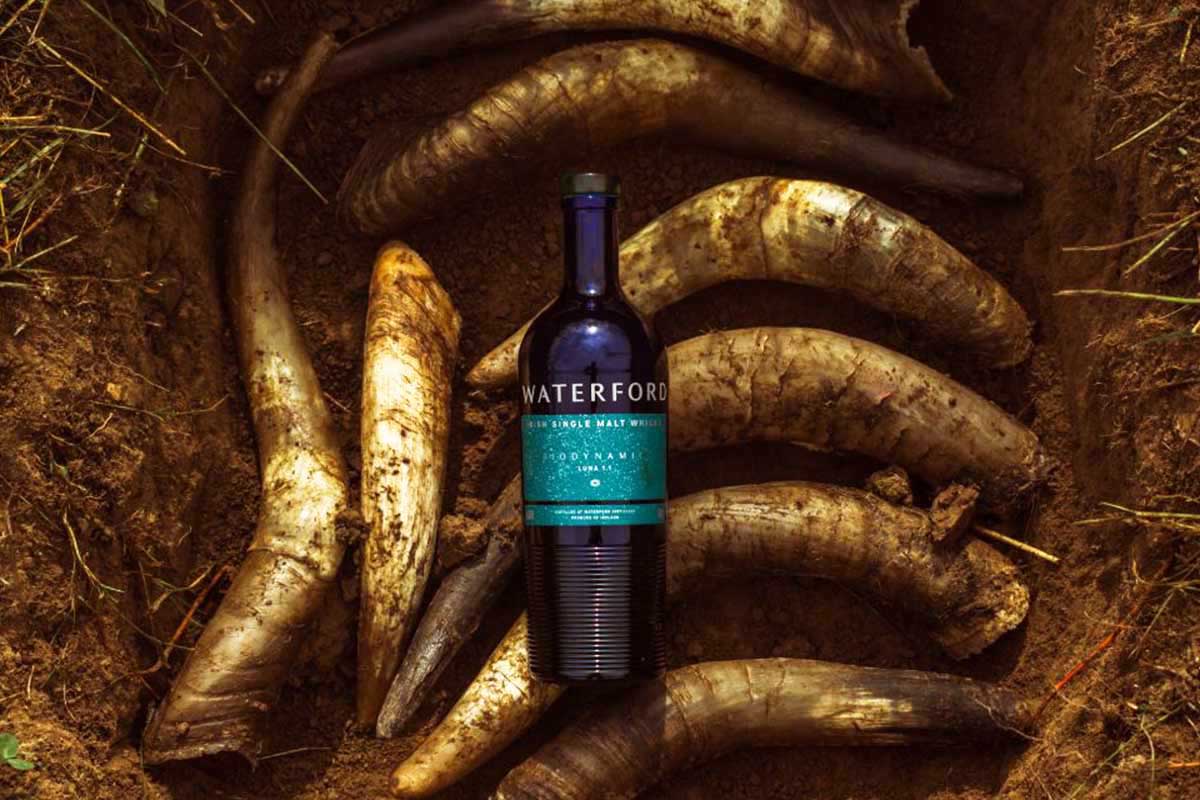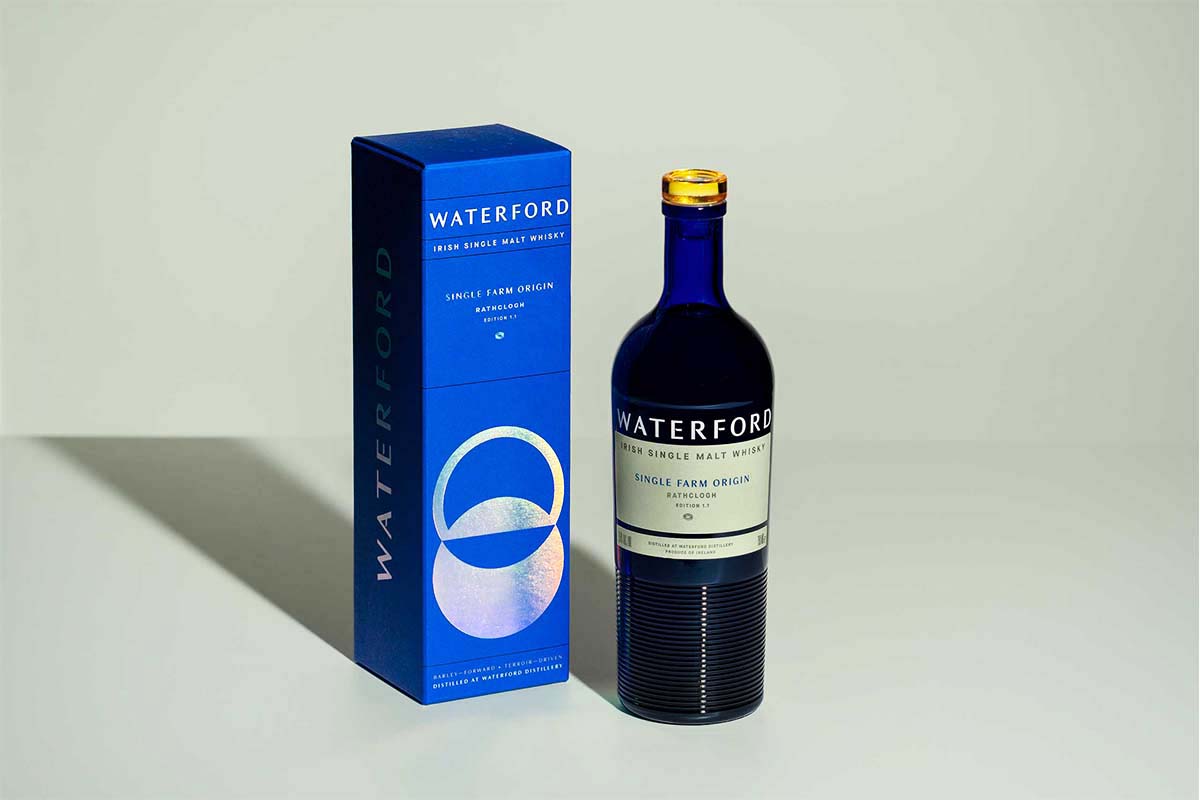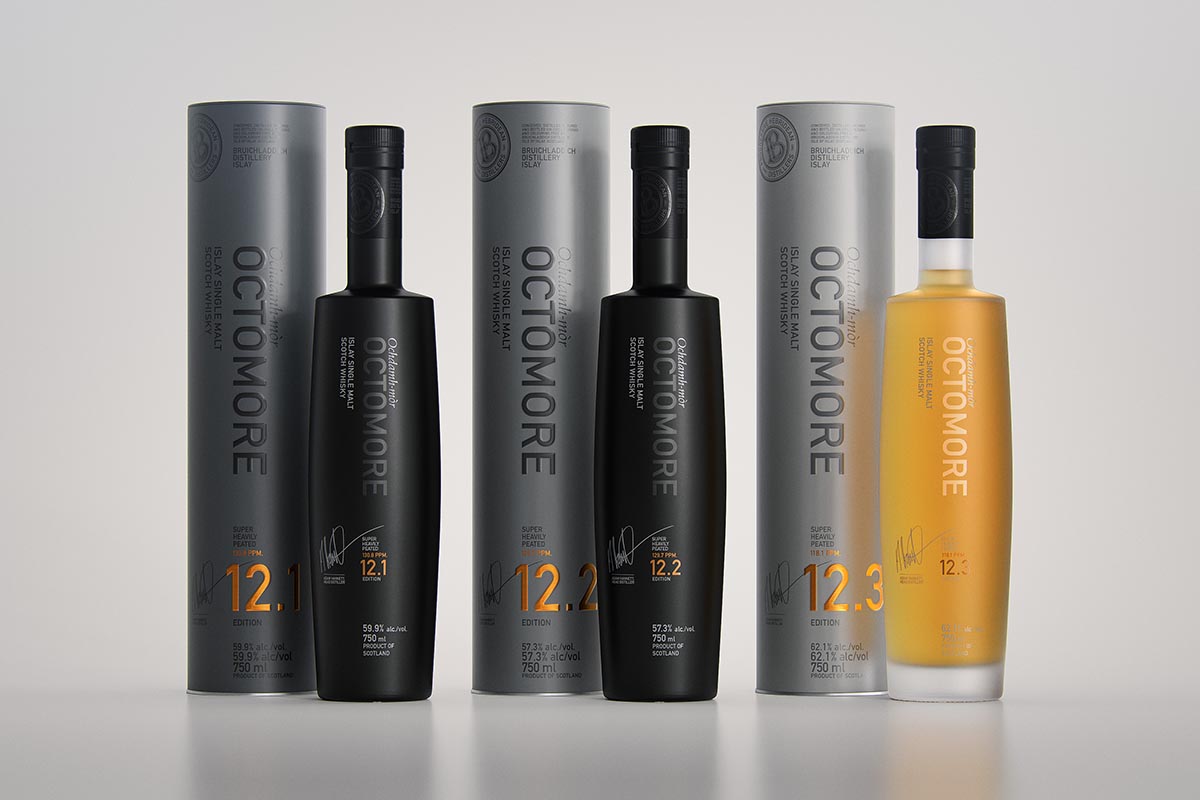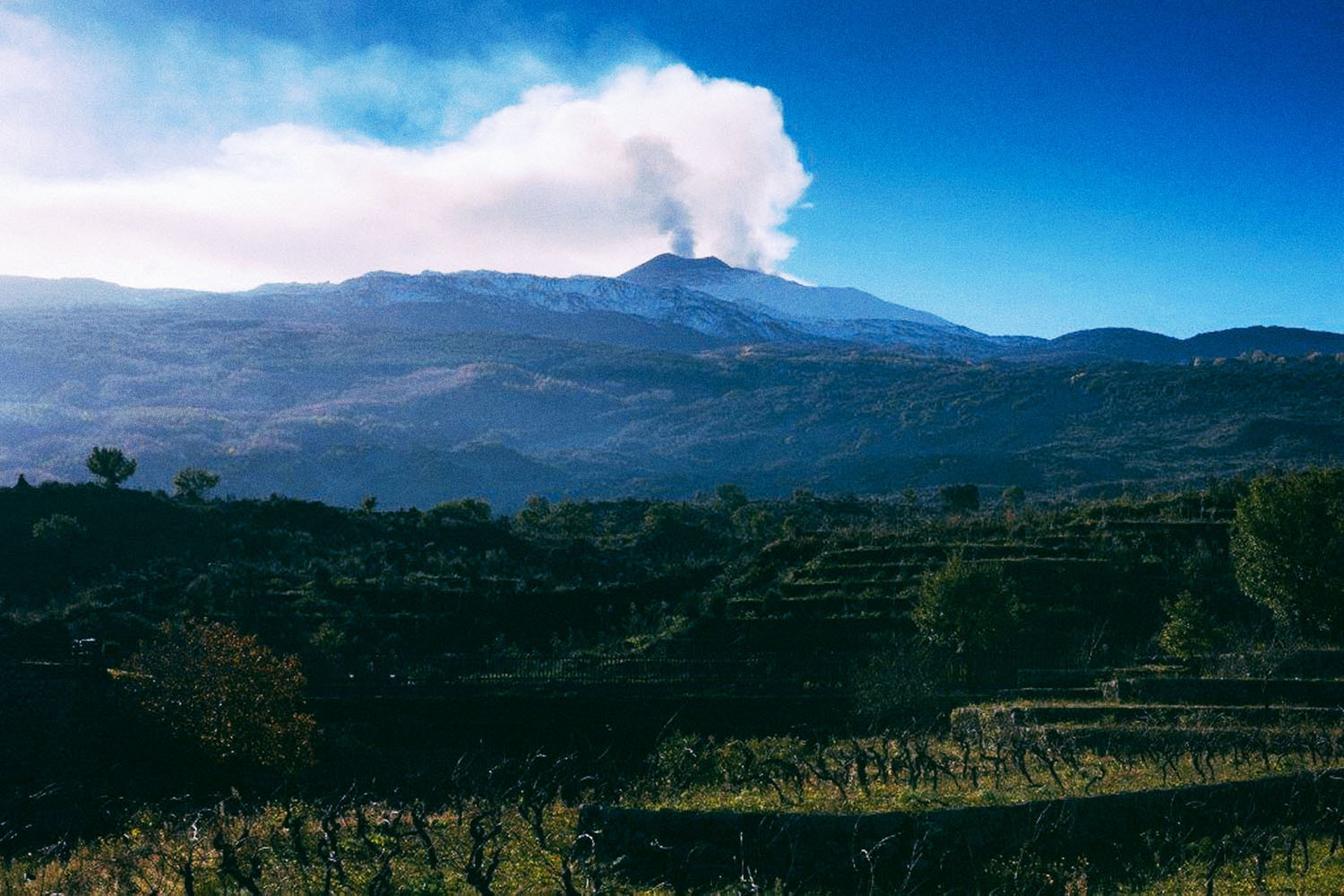You’ve most likely heard of “biodynamic” when it comes to wine.
That industry is far, far ahead of the spirits world when it comes to emphasizing both what’s grown on the land and how it’s grown — and how that influences what ends up in the bottle.
But a few terroir-minded whisky brands have now started applying these same organic and admittedly esoteric principles to their own expressions. Late last fall both Bruichladdich and Waterford introduced limited-edition biodynamic whiskies into their portfolio. It was an admittedly a small step into the biodynamic world — Bruichladdich, for instance, limited their release to just 5,000 bottles. And Waterford, which works with individual farms in order to truly emphasize how differences in soil, climate, barley and location can influence their final product, started with just one farm that had recently been biodynamically certified.
We should say a few things before we continue — we tried both biodynamic releases, and they’re phenomenal (certainly on par with the other experimental and one-off expressions released by each distillery). But we also realize the word “biodynamic” needs some context, history and discussion — and yes, there are elements to these farming practices that could make your eyes roll.
What is biodynamic agriculture?
The Biodynamics Association defines it as the “holistic, ecological and ethical approach to farming, gardening, food and nutrition.” Basically, a biodynamic farm is treated as a living organism; farmers work to “harmonize” the fields, forests, plants, animals, soils, compost, people and (this is where it gets tricky) “spirit” of the place.
If you simply look at biodynamic farming as organic farming with an advanced set of standards, it sounds great. Biodiversity is encouraged, while plants and animals work together. You won’t find chemical fertilizers or heavy farm machinery here, for example, but you will hear a lot about compost preparation. Add in ideas about gentle soil cultivation and diverse crop rotations and, really, what’s not to love? The majority of biodiversity techniques can be found in Germany, but the methods are practiced worldwide and certified by The Biodynamic Federation Demeter International.
Take a deeper dive, and some concerns may, pun not intended, sprout. As the critical thinking blog Neurologica contends, “[Biodynamic agriculture] started its existence as a (mostly) pure pseudoscience. The notion was to farm according to the natural cycles, but this included astrology, herbalism, sympathetic magic, and homeopathic principles. Certain planting had to be done under the proper phase of the moon and astrological sign.”

And then there’s the man who started all this: The tenets behind biodynamic agriculture were developed in 1924 by Rudolf Steiner, an Austrian philosopher who also gets tagged as an occultist, social reformer, architect, esotericist and “claimed clairvoyant ” on an extremely fascinating entry on Wikipedia. The Biodynamic Association refers to him as a “highly-trained scientist” who began to emphasize a spiritual-scientific approach to knowledge later in life. Again, utilizing holistic methods and not relying on chemicals is a totally fine philosophy, although some of the methods he espoused, like packing cow manure into a cow horn and burying it in the ground (one of eight biodynamic methods of land preparation) are, well, odd. Also, Steiner had some problematic views on race.
While it’s difficult to find “proof” that biodynamic agriculture is superior to conventional or organic farming methods — and this type of farming is always going to be limited by an inability to apply these principles to feed large numbers of people — some of the justification and popularity of the movement comes from the people actually working the land. “Winemakers couldn’t help but notice that some of the finest wines in the world are made from grapes grown in biodynamic vineyards,” as Elizabeth Candelario, co-director of Demeter USA, told The Guardian in 2017.
Some farmers swear by it. Science is somewhat skeptical. And the history of biodynamic thought is … interesting. One good way to look at it is what I overheard at a tasting of Waterford’s new release: “A lot of people in wine, they’re not into the mystical stuff, but I would say biodynamic farming is really hard to do and it makes you pay close attention to the vines,” as one booze industry vet told me.
The real story: How does this philosophy affect what’s in my glass?
The biodynamic whiskies, tasted and explained
In November, Bruichladdich launched The Biodynamic Project, which the Hebridian distillery described as the “first biodynamic Scotch whisky.” It was distilled in 2011 and matured for 10 years in first fill ex-bourbon casks; it’s unpeated and hails from a single farm (although, interestingly, that farm is in England, a unique departure for the locally focused Scottish distillery).
Pretty much around the same time, Ireland’s Waterford Distillery, the largest producer of organic whisky in the world, released Biodynamic: Luna, the world’s first whisky made from Biodynamic Irish barley. “Eccentric to some, regenerative to others, biodynamic agriculture goes beyond the ordinary ecological mindset,” as the brand describes their release, perhaps envisioning potential criticism (although they did claim, perhaps cheekily, to “invoke the goddess of the moon” for this bottling).
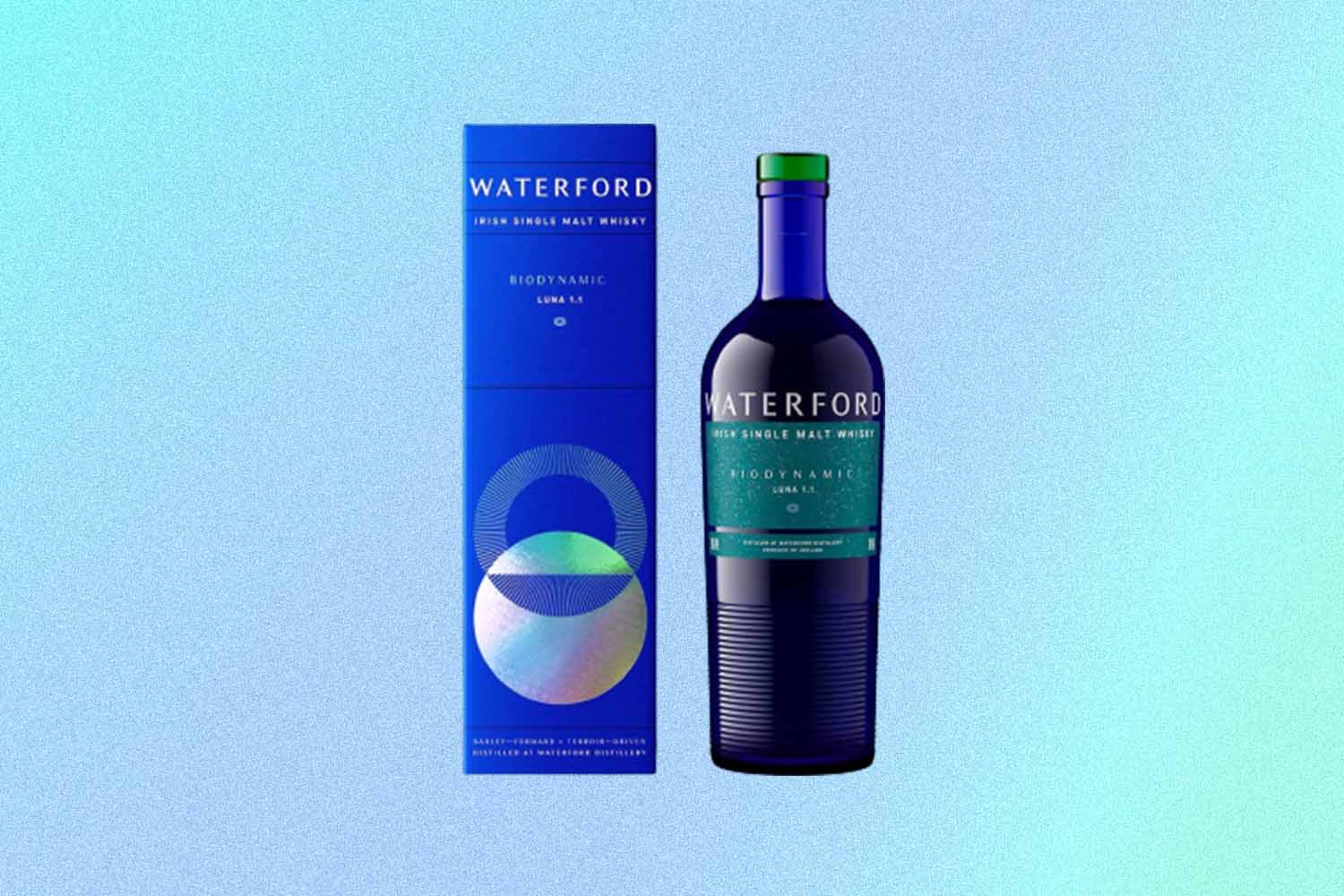
This move into biodynamic experiments by both brands can actually be traced to one man, Waterford’s founder and CEO Mark Reynier. “Mark, who started Waterford, was in the wine industry before, and he approached whisky like wine,” as Megan Kiely, Terroir Evangelist for Waterford, told us at a tasting in December. “He didn’t think anyone in whisky was paying attention to the raw ingredient, the barley. So he produced a whiskey that focused on terroir.” (And before Waterord, Reynier worked at Bruichladdich.)
Some of the releases by Waterford come from farms using conventional farming methods (in 2015 when the brand started, that number was 97 percent, but now it’s around 75 percent), and others are increasingly from more organic farms or, now, a biodynamic farm or two. As Kiely explains, even when that initial biodynamic farm “converted” from a more conventional organic approach, it took an additional three years “to get the chemicals out of the land.”
“I think at the end of the day, it’s just about seeing if and how biodynamic farming has an influence on the soil, and [whether it] can it lend itself to different flavors,” she says. My thoughts? Even at just three years, two months and a day of aging, this a vibrant, creamy, fruity and even minty whisky — Waterford, unlike its other Irish spirits peers, doesn’t use an “e” in “whiskey” — that’s as wonderful and unique as all the other Waterford releases. They’re a brand that has proven that terroir makes a difference — I can’t say this is better or worse than what they’ve done with barley on other farms, but it is exceptional. (Kiely also notes that some recent harvests, particularly with older barley varieties, have performed better in biodynamic fields, but again, that’s hard to prove.)
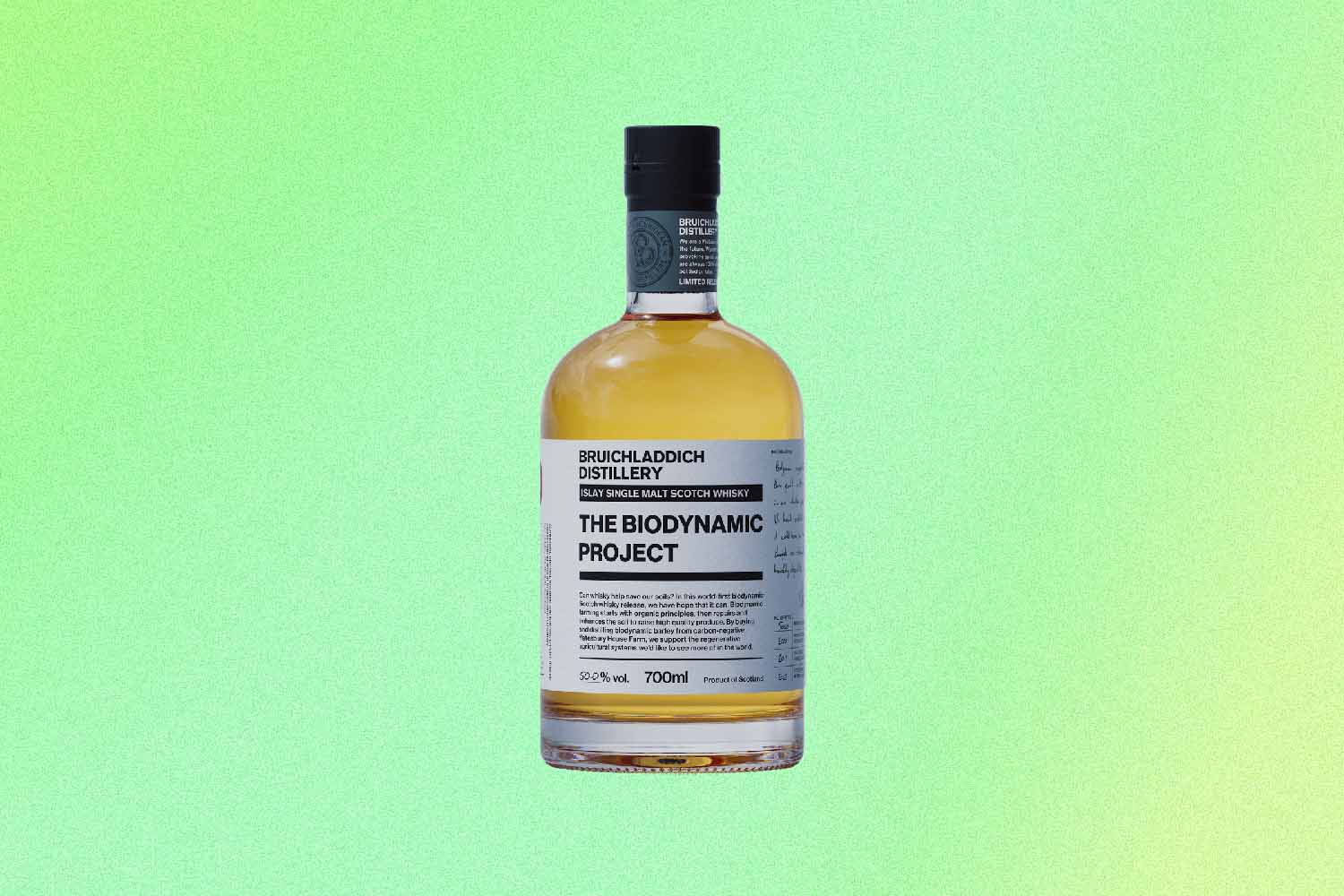
As for Bruichladdich: “We’ve always been driven by our curiosity to find flavor, celebrate the contribution of barley and bring the esoteric wine concept of terroir to whisky,” as head distiller Adam Hannett tells us. For the distillery, this has included the use of organic barley as early as 2003 and resurrecting ancient-grain Bere grain on Islay and Orkney.
In 2010, the company approached Richard Gantlett — owner and farmer at Yatesbury House Farm — through the UK’s Soil Association. He was already practicing organic and biodynamic principles at Yatesbury but hadn’t yet fully certified as biodynamic. “We were interested in understanding how this holistic farming system could influence flavor,” says Hannett, who notes that 11 years after that first harvest, Yatesbury now sequesters 10 times more carbon than it emits. “Knowing that everything on the farm works symbiotically, improving biodiversity on site, building crop resiliency and its adaptation to the changing world and sequestering carbon, they’re pretty exciting concepts to explore through whisky.”
Bruichladdich’s Biodynamic Project features a beautiful creamy texture and a succulent mouthfeel. The fruity notes (particularly pear) seem amplified. But again, is it much better than the organic (not biodynamic) barley expression aged eight years that I tried alongside it? There are notable differences, but both are wonderful in their own ways.
“We didn’t have any pre-conceived ideas of how biodynamic barley would affect the final product,” Hannett says. “Our ethos at the distillery is to try something new and see where it takes us. Biodynamic farming definitely has its doubters, and that’s okay, not everything can be for everyone, but looking at the way that Richard treats his farm with such respect, that’s incredibly rewarding to see. And having completed a PhD on soil health, weed burden and crop production, he’s an expert in the agronomy field — perhaps that’s also why we felt that despite some doubters questioning biodynamic methods, we were physically and academically in good hands.”
In the end, while we may not buy into everything about biodynamic farming — particularly anything along the astrological and mystical side — it is good to see whisky brands focus on elements of the spirit that can be affected outside the barrel. “Two decades ago, no one was talking about terroir in spirits, and now it’s a term used openly by lots of different producers — from whisky to mezcal,” Hannett says. “That greater connection to the raw ingredient, celebrating a sense of place — these are all principles that have come from terroir and they are certainly becoming more commonplace.”
Every Thursday, our resident experts see to it that you’re up to date on the latest from the world of drinks. Trend reports, bottle reviews, cocktail recipes and more. Sign up for THE SPILL now.
